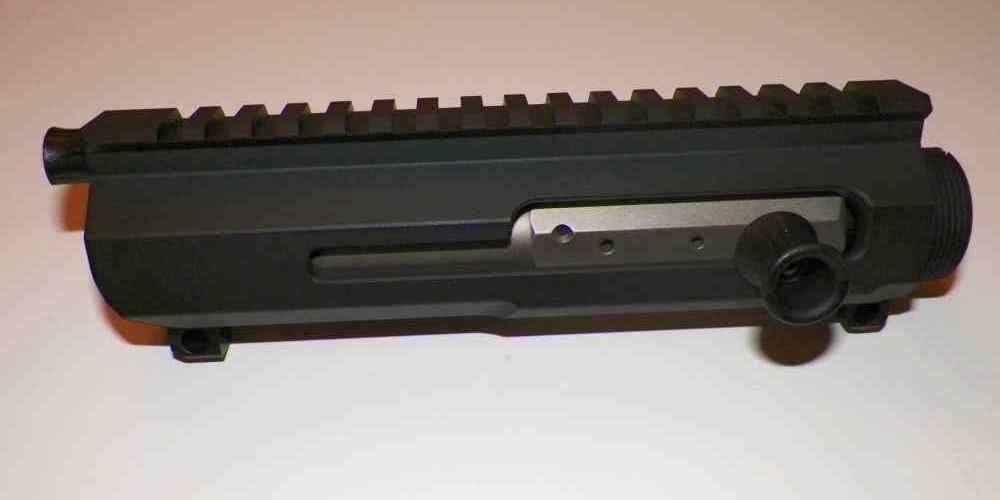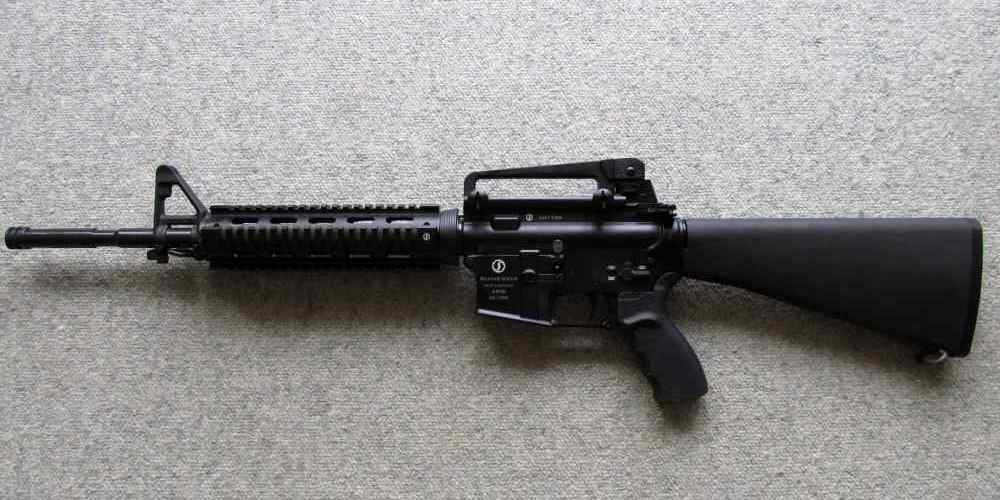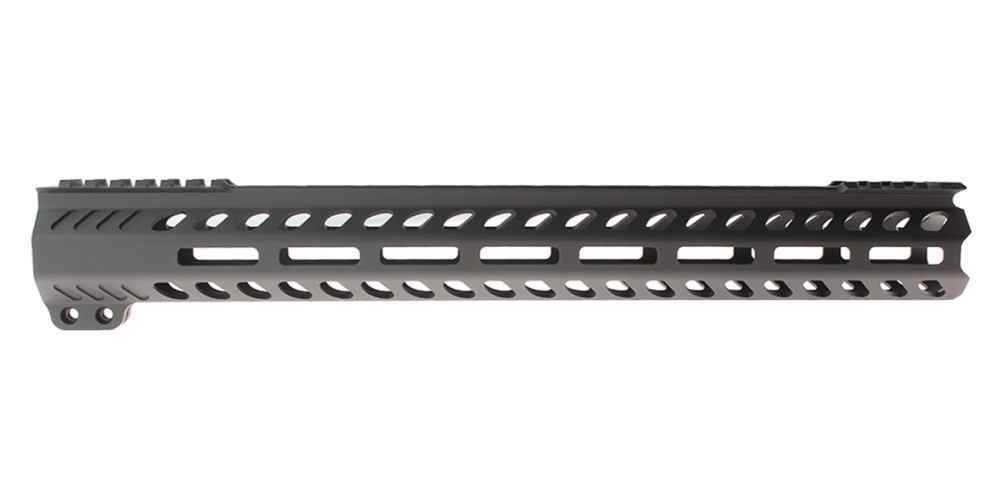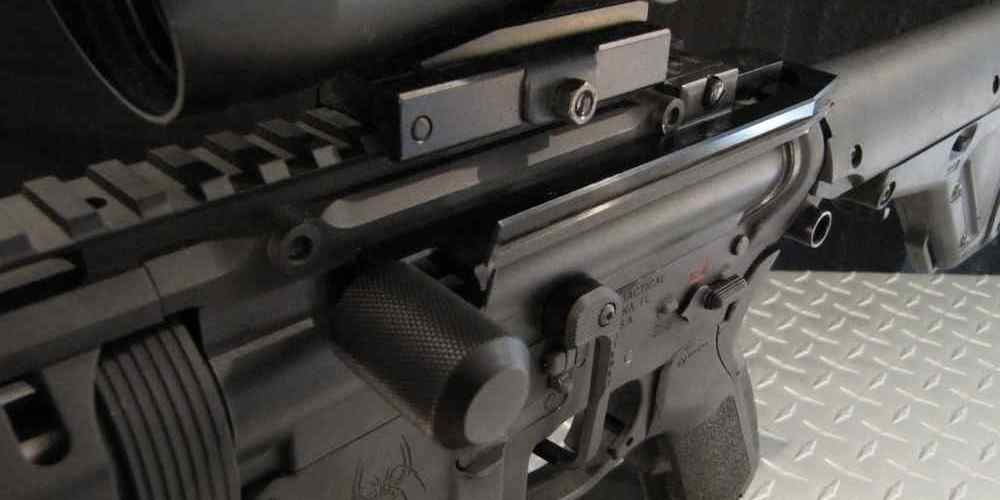“Keep your AR15 running smoothly with our expert buffer system repairs.”
Common Issues with AR15 Buffer Systems
The AR15 is a popular rifle known for its reliability and versatility. However, like any mechanical device, it can experience issues that require attention. One common area of concern for AR15 owners is the buffer system. The buffer system is a critical component of the rifle that helps to absorb recoil and ensure smooth operation. When the buffer system is not functioning properly, it can lead to malfunctions and decreased performance.
One of the most common issues with AR15 buffer systems is buffer spring wear. Over time, the buffer spring can become worn out and lose its ability to properly absorb recoil. This can result in increased felt recoil and decreased accuracy. To address this issue, it is important to regularly inspect the buffer spring for signs of wear and replace it as needed. A worn buffer spring can easily be replaced with a new one, ensuring that the rifle continues to function smoothly.
Another common issue with AR15 buffer systems is buffer weight compatibility. The buffer weight is an important factor in the overall performance of the rifle. If the buffer weight is too heavy or too light, it can lead to cycling issues and malfunctions. It is important to ensure that the buffer weight is compatible with the rest of the rifle’s components. If you are experiencing cycling issues, it may be necessary to adjust the buffer weight to achieve optimal performance.
In addition to buffer spring wear and buffer weight compatibility, another common issue with AR15 buffer systems is buffer tube damage. The buffer tube is the part of the rifle that houses the buffer and buffer spring. If the buffer tube becomes damaged or bent, it can lead to cycling issues and malfunctions. It is important to regularly inspect the buffer tube for signs of damage and replace it if necessary. A damaged buffer tube can easily be replaced with a new one, ensuring that the rifle continues to function smoothly.
To ensure that your AR15 buffer system is operating smoothly, it is important to regularly inspect and maintain the components. This includes checking the buffer spring for wear, ensuring that the buffer weight is compatible, and inspecting the buffer tube for damage. By addressing these common issues proactively, you can prevent malfunctions and ensure that your rifle continues to perform at its best.
In conclusion, the AR15 buffer system is a critical component of the rifle that helps to absorb recoil and ensure smooth operation. By addressing common issues such as buffer spring wear, buffer weight compatibility, and buffer tube damage, you can prevent malfunctions and ensure that your rifle continues to perform at its best. Regular inspection and maintenance of the buffer system are key to ensuring optimal performance. With proper care and attention, your AR15 will continue to be a reliable and versatile firearm for years to come.
How to Properly Maintain AR15 Buffer Systems
The AR15 is a popular rifle among gun enthusiasts for its reliability and versatility. However, like any mechanical device, it requires regular maintenance to ensure smooth operation. One crucial component of the AR15 is the buffer system, which helps absorb recoil and cycle the action. Proper maintenance of the buffer system is essential to keep your AR15 functioning properly.
One common issue that AR15 owners may encounter is a malfunctioning buffer system. This can manifest as failure to cycle properly, excessive recoil, or even damage to the rifle. Fortunately, most buffer system issues can be easily repaired with some basic tools and know-how.

The first step in repairing a buffer system is to diagnose the problem. If your AR15 is experiencing cycling issues or excessive recoil, the buffer system may be to blame. Inspect the buffer tube, buffer spring, and buffer itself for any signs of wear or damage. If any components appear worn or broken, they will need to be replaced.
To repair a malfunctioning buffer system, you will need a few tools: a punch, a hammer, and a wrench. Start by removing the stock from the buffer tube. Use a wrench to unscrew the buffer tube from the lower receiver. Once the buffer tube is removed, you can access the buffer spring and buffer.
Inspect the buffer spring for any signs of wear or damage. If the spring is compressed or appears bent, it will need to be replaced. Use a punch and hammer to remove the buffer retainer pin, then remove the buffer and spring from the buffer tube.
Next, inspect the buffer for any signs of wear or damage. If the buffer is cracked or shows signs of deformation, it will need to be replaced. Install the new buffer and spring into the buffer tube, making sure they are properly seated.
Reassemble the buffer system by reinstalling the buffer tube onto the lower receiver. Use a wrench to tighten the buffer tube securely. Reattach the stock to the buffer tube, making sure it is properly aligned.
Once the buffer system is reassembled, test the rifle to ensure it cycles properly and absorbs recoil effectively. If the issue persists, you may need to seek professional help from a gunsmith.
Regular maintenance of the buffer system is essential to keep your AR15 functioning properly. Inspect the buffer system regularly for any signs of wear or damage, and replace any worn components as needed. By following these simple steps, you can ensure that your AR15 operates smoothly and reliably for years to come.
Upgrading Your AR15 Buffer System for Improved Performance
If you own an AR15 rifle, you know how important it is to keep it in top working condition. One crucial component of the AR15 is the buffer system, which helps to absorb recoil and ensure smooth operation. Over time, the buffer system can wear out or become damaged, leading to malfunctions and decreased performance. In this article, we will discuss how to repair and upgrade your AR15 buffer system to ensure optimal performance.
One common issue with AR15 buffer systems is worn out or broken buffers. The buffer is a small, weighted component that sits inside the buffer tube and helps to absorb recoil. If the buffer becomes damaged or worn out, it can lead to increased recoil, decreased accuracy, and even malfunctions. Fortunately, replacing a buffer is a relatively simple and inexpensive repair that can greatly improve the performance of your AR15.
To replace the buffer, first, ensure that your rifle is unloaded and the safety is engaged. Next, remove the stock from the buffer tube by loosening the retaining screw or pin. Once the stock is removed, you can access the buffer and spring inside the buffer tube. Carefully remove the old buffer and spring, being mindful of any small parts that may come loose. Install the new buffer and spring, making sure they are properly seated and aligned. Finally, reattach the stock to the buffer tube and test the rifle to ensure proper function.
Another common issue with AR15 buffer systems is worn out or damaged buffer springs. The buffer spring is a critical component that helps to regulate the movement of the buffer and ensure smooth operation. If the buffer spring becomes worn out or damaged, it can lead to malfunctions and decreased performance. Replacing the buffer spring is a slightly more involved repair than replacing the buffer, but it is still a relatively simple process.
To replace the buffer spring, first, ensure that your rifle is unloaded and the safety is engaged. Next, remove the stock from the buffer tube as described above. Once the stock is removed, you can access the buffer and spring inside the buffer tube. Carefully remove the old buffer spring and install the new one, making sure it is properly seated and aligned. Reattach the stock to the buffer tube and test the rifle to ensure proper function.
In addition to replacing worn out components, you may also want to consider upgrading your AR15 buffer system for improved performance. Upgrading to a heavier buffer can help to reduce recoil and improve accuracy, especially when using high-powered ammunition. Additionally, upgrading to a high-quality buffer spring can help to ensure smooth operation and reliable cycling.
When upgrading your AR15 buffer system, be sure to choose components that are compatible with your rifle and meet your specific needs. There are many aftermarket options available for AR15 buffer systems, so do some research and choose components that are well-reviewed and recommended by other AR15 owners. Installing upgraded components is a great way to customize your rifle and improve its performance.
In conclusion, maintaining and repairing your AR15 buffer system is essential for ensuring smooth operation and optimal performance. By replacing worn out components, such as buffers and buffer springs, and upgrading to high-quality aftermarket components, you can greatly improve the function of your AR15 rifle. Whether you are a seasoned shooter or a beginner, taking care of your AR15 buffer system is a simple and effective way to keep your rifle in top working condition.
Troubleshooting Tips for AR15 Buffer System Repairs
The AR15 is a popular rifle among gun enthusiasts for its reliability and versatility. However, like any mechanical device, it can experience issues that require repairs. One common area that may need attention is the buffer system. The buffer system is a critical component of the AR15, responsible for absorbing recoil and ensuring smooth operation. If you are experiencing issues with your AR15’s buffer system, here are some troubleshooting tips to help you diagnose and repair the problem.
First and foremost, it is important to understand how the buffer system works. The buffer system consists of several components, including the buffer tube, buffer spring, and buffer. When the rifle is fired, the buffer compresses the buffer spring, absorbing the recoil and cycling the action. If any of these components are damaged or worn out, it can lead to malfunctions in the rifle’s operation.
One common issue with the buffer system is a failure to cycle properly. If you are experiencing failure to eject or failure to feed issues, it may be due to a problem with the buffer system. Start by inspecting the buffer tube for any signs of damage or wear. If the buffer tube is dented or bent, it may need to be replaced. Additionally, check the buffer spring for any signs of corrosion or fatigue. A worn-out buffer spring can lead to cycling issues and should be replaced if necessary.
Another common issue with the buffer system is excessive recoil. If you are noticing increased recoil when firing your AR15, it may be due to a worn-out buffer. Inspect the buffer for any signs of wear or damage. If the buffer is cracked or deformed, it should be replaced. Additionally, check the buffer weight to ensure it is the correct weight for your rifle. Using the wrong buffer weight can lead to increased recoil and decreased performance.
If you are experiencing a sluggish or rough cycling action, it may be due to a lack of lubrication in the buffer system. Proper lubrication is essential for smooth operation of the buffer system. Make sure to clean and lubricate the buffer tube, buffer spring, and buffer regularly to ensure optimal performance. Additionally, check for any debris or fouling that may be causing the cycling issues.
In some cases, the buffer system may need to be completely disassembled and cleaned to resolve the issue. Start by removing the buffer tube, buffer spring, and buffer from the rifle. Inspect each component for any signs of damage or wear. Clean the components thoroughly with a solvent and lubricate them before reassembly. Make sure to follow the manufacturer’s guidelines for disassembly and reassembly to avoid damaging the components.
If you are still experiencing issues with your AR15’s buffer system after troubleshooting, it may be time to seek professional help. A gunsmith or firearms expert can diagnose the problem and recommend the best course of action for repairs. Remember, proper maintenance and care of your AR15’s buffer system is essential for ensuring smooth operation and reliable performance. By following these troubleshooting tips, you can keep your AR15 in top condition and enjoy many years of shooting enjoyment.
Importance of Regular Inspections for AR15 Buffer Systems
The AR15 buffer system is a critical component of the rifle that helps to absorb recoil and ensure smooth operation. Regular inspections of the buffer system are essential to ensure that it is functioning properly and to prevent malfunctions that could affect the performance of the rifle.
One of the most important reasons to regularly inspect the AR15 buffer system is to check for any signs of wear or damage. Over time, the buffer system can become worn down from repeated use, which can affect its ability to absorb recoil effectively. By inspecting the buffer system regularly, you can identify any signs of wear or damage and take steps to repair or replace the components as needed.
Another reason to regularly inspect the AR15 buffer system is to ensure that it is properly lubricated. Proper lubrication is essential for the smooth operation of the buffer system, as it helps to reduce friction between the moving parts and prevent wear and tear. By regularly inspecting the buffer system, you can ensure that it is properly lubricated and take steps to reapply lubricant as needed.
Regular inspections of the AR15 buffer system can also help to identify any potential issues before they become major problems. By inspecting the buffer system regularly, you can identify any loose or damaged components that could affect the performance of the rifle. By addressing these issues early on, you can prevent malfunctions that could affect the reliability of the rifle in the field.
In addition to regular inspections, it is also important to perform routine maintenance on the AR15 buffer system. This includes cleaning the components regularly to remove dirt, debris, and other contaminants that could affect the performance of the buffer system. By keeping the buffer system clean and well-maintained, you can ensure that it continues to function properly and reliably.
If you do identify any issues with the AR15 buffer system during your inspections, it is important to address them promptly. Ignoring problems with the buffer system can lead to malfunctions that could affect the performance of the rifle and potentially put you at risk in the field. By taking the time to repair or replace any damaged components, you can ensure that your rifle continues to operate smoothly and reliably.
In conclusion, regular inspections of the AR15 buffer system are essential to ensure that it is functioning properly and to prevent malfunctions that could affect the performance of the rifle. By inspecting the buffer system regularly, you can identify any signs of wear or damage, ensure that it is properly lubricated, and address any potential issues before they become major problems. By taking the time to maintain and repair the buffer system as needed, you can ensure that your AR15 continues to operate smoothly and reliably for years to come.









